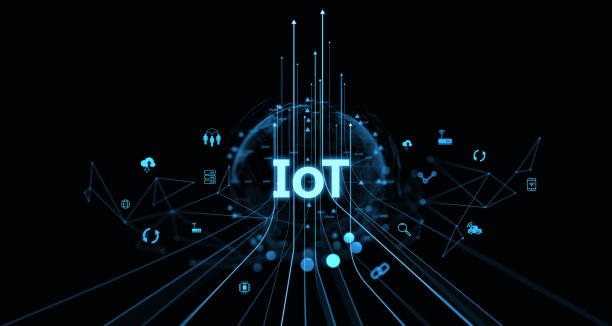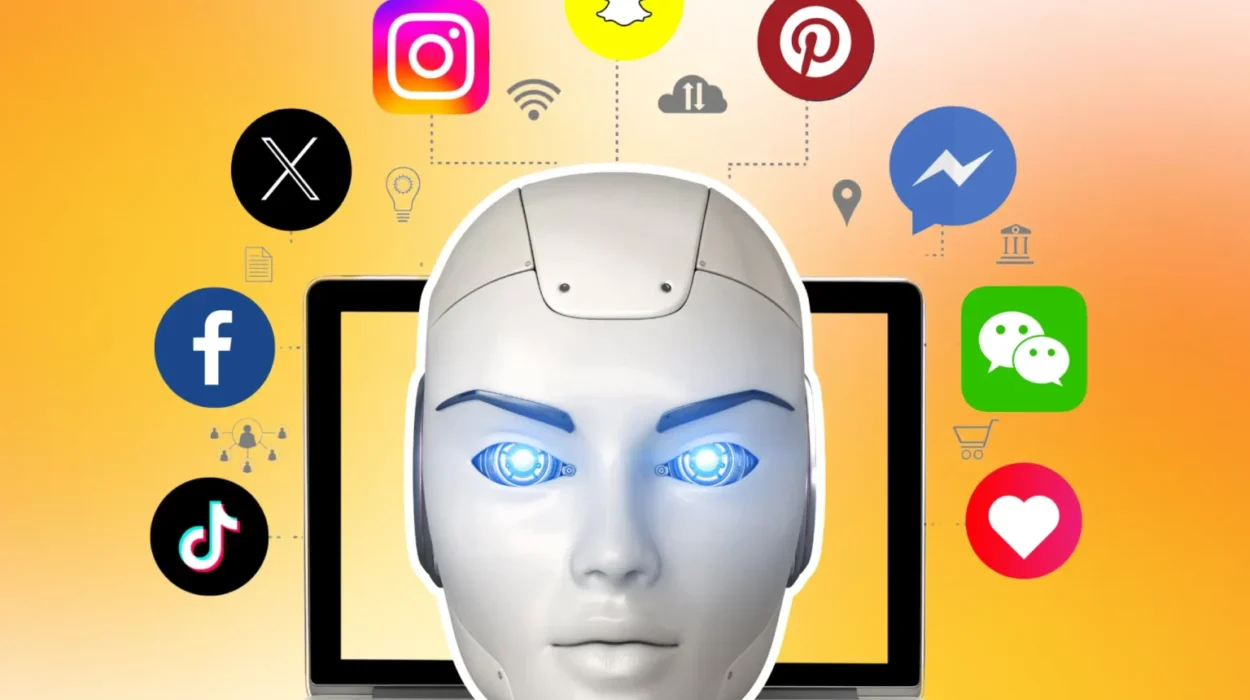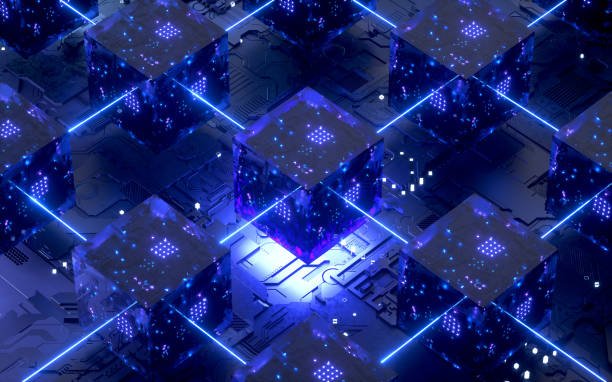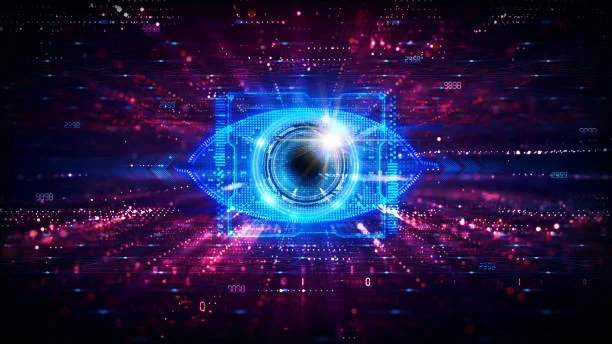The Internet of Things (IoT) is a transformative concept that has been gradually reshaping the way we interact with the world around us. From smart home devices that adjust the lighting in your living room to industrial machines that communicate with each other to optimize production processes, IoT is changing the fabric of everyday life, business operations, and even entire industries. But what exactly is IoT, how does it work, and what does its rapid expansion mean for the future? In this article, we’ll explore the many facets of the Internet of Things, breaking down the technology, its applications, and the broader implications it has for our society.
What is IoT? A Basic Understanding
At its core, the Internet of Things (IoT) refers to the network of physical objects, devices, sensors, and systems that are embedded with software, sensors, and other technologies that allow them to collect and exchange data over the internet. In simple terms, IoT is about connecting everyday physical objects to the digital world, enabling them to communicate with one another and with us in real-time.
Imagine a smart refrigerator that tracks your food consumption, orders groceries when you’re running low, and notifies you when the milk is about to expire. Or consider a smart thermostat that learns your preferences and adjusts the temperature in your home automatically, saving energy while keeping you comfortable. These examples are just a small glimpse into the possibilities that IoT offers.
A Brief History of IoT
The origins of IoT can be traced back to the early days of the internet. In the 1980s, as computers and networking technologies were becoming more common, the idea of connecting physical devices to the internet was first proposed. One of the earliest mentions of IoT can be attributed to Kevin Ashton, a British entrepreneur, who coined the term “Internet of Things” in 1999 while working at Procter & Gamble. Ashton envisioned a world where everyday objects, from grocery items to industrial machines, could communicate with each other via the internet, making processes more efficient and reducing human intervention.
In the years that followed, advancements in wireless communication, miniaturized sensors, and cloud computing have paved the way for the widespread adoption of IoT. By the 2010s, smartphones, wearables, and home automation systems began to incorporate IoT technology, making it a part of our daily lives. Fast forward to today, and IoT is no longer a futuristic concept—it’s a reality that impacts everything from agriculture to healthcare, transportation to energy, and beyond.
How Does IoT Work?
To understand the impact of IoT, it’s essential to know how it works at a fundamental level. The system architecture behind IoT can be broken down into four key components: devices (things), connectivity, data processing, and user interaction.
1. Devices (Things)
The “things” in IoT refer to any physical objects embedded with sensors, actuators, or other technologies that allow them to collect and exchange data. These can be as simple as a temperature sensor or as complex as a self-driving car. These devices are typically equipped with processors that enable them to collect and transmit data to the cloud or to other devices. Examples include smart thermostats, fitness trackers, wearable health monitors, connected appliances, and industrial sensors.
2. Connectivity
For IoT devices to communicate with each other, they need a network to transmit their data. This is where connectivity comes into play. Various communication technologies are used, including Wi-Fi, Bluetooth, Zigbee, cellular networks, and low-power wide-area networks (LPWANs) such as LoRa and NB-IoT. The choice of connectivity depends on the range, power consumption, and data transfer speed requirements of the devices in question.
3. Data Processing
Once the data is collected and transmitted, it needs to be processed. This is typically done in the cloud, where powerful computing resources can analyze vast amounts of data in real-time. Data processing involves filtering, cleaning, and interpreting raw data to extract meaningful insights. In some cases, data processing can also be done locally on the devices themselves (edge computing) if immediate decisions need to be made without relying on cloud processing.
4. User Interaction
Finally, IoT systems need a way for users to interact with the data and control the devices. This can be through a mobile app, a web interface, or even voice commands (as seen with virtual assistants like Amazon Alexa or Google Assistant). In some cases, the IoT system can take autonomous actions based on the data it collects, such as adjusting the temperature of a thermostat or sending a notification to a user when a device needs maintenance.
Applications of IoT
IoT’s potential is vast and spans many industries, each benefiting from improved efficiency, productivity, and convenience. Let’s explore some of the most prominent applications of IoT across different sectors.
1. Smart Homes and Consumer Devices
The most common application of IoT for everyday consumers is in smart home devices. These devices connect to the internet and can be controlled remotely or automated to perform tasks based on user preferences or environmental conditions.
- Smart Thermostats: These devices, like Nest and Ecobee, learn a user’s schedule and preferences, adjusting the temperature automatically for comfort and energy savings.
- Smart Lighting: Lights that can be controlled remotely via smartphones or voice assistants and can even change color to match moods or events.
- Smart Appliances: Washing machines, refrigerators, and even coffee makers that can be controlled remotely and provide notifications when tasks are complete.
- Security Systems: Smart cameras, doorbells, and motion sensors that alert homeowners of any unusual activity and allow them to monitor their homes from anywhere.
2. Healthcare and Wearables
In the healthcare industry, IoT is revolutionizing the way patients are monitored and treated, especially with the advent of wearable devices. These wearables track health metrics such as heart rate, steps taken, calories burned, and even blood sugar levels, providing continuous data that can be analyzed for early detection of health issues.
- Wearables: Devices like Fitbit, Apple Watch, and Garmin are not just fitness trackers—they are personal health assistants, providing real-time data and even sending alerts in case of irregularities like abnormal heart rates or falls.
- Remote Patient Monitoring: IoT devices are also used for monitoring patients in real-time. Doctors can keep track of patients’ vital signs without requiring them to be physically present in a clinic, reducing hospital readmissions and ensuring proactive care.
- Smart Medication Management: IoT-enabled pill dispensers can remind patients to take their medication on time, ensuring adherence to prescribed treatment regimens.
3. Industrial IoT (IIoT)
In the industrial sector, IoT is playing a significant role in streamlining operations, improving safety, and reducing costs. Known as Industrial IoT (IIoT), this technology allows for the real-time monitoring and optimization of machines, production lines, and entire factories.
- Predictive Maintenance: IoT sensors can monitor equipment performance and predict when a machine will require maintenance, reducing downtime and costly repairs.
- Supply Chain Management: IoT devices can track products as they move through the supply chain, ensuring transparency, reducing theft, and improving logistics efficiency.
- Smart Factories: In a smart factory, machines communicate with one another and with centralized control systems, optimizing production processes and ensuring product quality.
4. Agriculture
IoT is also making a huge impact on agriculture, where it helps farmers increase crop yields, reduce waste, and conserve resources. Through the use of IoT sensors, farmers can monitor soil moisture, weather conditions, and even crop health in real time.
- Precision Farming: By using IoT sensors to gather data about soil quality, water usage, and crop growth, farmers can make data-driven decisions about when to irrigate, fertilize, and harvest.
- Livestock Monitoring: IoT devices attached to animals can monitor their health, activity, and location, helping farmers detect early signs of disease or ensure livestock are grazing in safe areas.
5. Transportation and Smart Cities
IoT is at the heart of the development of smart cities, where interconnected systems aim to improve urban living by making transportation more efficient, reducing energy consumption, and enhancing public services.
- Smart Traffic Management: IoT sensors can be used to monitor traffic flow in real-time, helping to optimize traffic light timings, reduce congestion, and minimize fuel consumption.
- Fleet Management: For logistics companies, IoT enables real-time tracking of vehicles, optimizing delivery routes, reducing fuel costs, and improving safety.
- Autonomous Vehicles: IoT is one of the driving forces behind the development of self-driving cars. These vehicles rely on IoT sensors to gather data about their environment, enabling them to make decisions and navigate safely without human intervention.
Benefits of IoT
The Internet of Things offers a wide range of benefits, both to consumers and businesses. Here are some of the key advantages:
1. Increased Efficiency
One of the most significant benefits of IoT is its ability to automate routine tasks, reducing the need for human intervention and allowing for more efficient use of resources. In smart homes, devices automatically adjust settings based on your preferences, saving time and energy. In industrial settings, machines can monitor their own performance and alert operators to potential issues, preventing unnecessary downtime.
2. Cost Savings
By enabling predictive maintenance, reducing energy consumption, and optimizing processes, IoT can help businesses and consumers save money. For example, IoT-enabled thermostats can reduce heating and cooling costs by adjusting the temperature based on occupancy patterns, while smart lighting can lower electricity bills by dimming lights in unused rooms.
3. Enhanced Convenience
IoT makes life easier by automating everyday tasks. With IoT devices, you can control your home environment, monitor your health, and manage your appliances—all from your smartphone or voice assistant.
4. Real-Time Data and Insights
The data collected by IoT devices provides valuable insights into how systems are functioning and where improvements can be made. Businesses can analyze this data to optimize operations, while consumers can use it to make more informed decisions about their lifestyle.
5. Improved Safety and Security
IoT-powered security systems help keep homes and businesses safe by providing real-time monitoring and alerts. Wearables can track vital signs and alert users to health emergencies, while IoT sensors can detect potential hazards, such as gas leaks or fires, and notify authorities.
Challenges and Concerns
While the benefits of IoT are clear, there are also challenges and concerns associated with its rapid growth.
1. Privacy and Security
As more devices are connected to the internet, the potential for cyberattacks increases. Hackers could gain access to sensitive data or take control of IoT devices, creating significant security risks. To mitigate these threats, robust encryption methods, secure communication protocols, and regular software updates are essential.
2. Data Overload
With the vast amount of data generated by IoT devices, there is a risk of information overload. Not all data is useful, and without proper filtering and processing, it can be overwhelming to analyze and act on all the incoming information. Effective data management and analysis tools are needed to extract actionable insights.
3. Interoperability
IoT devices often come from different manufacturers, each using their own communication standards and protocols. This lack of interoperability can make it challenging to integrate devices into a cohesive system. Standardization and collaboration among industry players are needed to create a more unified IoT ecosystem.
4. Power Consumption
Although IoT devices are becoming more energy-efficient, many still rely on batteries or constant power supply. Ensuring that devices can run for extended periods without frequent charging or replacing batteries is a critical challenge for the future.
The Future of IoT
As IoT continues to evolve, we can expect even more advanced applications, improved security measures, and greater integration across industries. Some trends to watch include:
- Edge Computing: Processing data closer to the source (on the device or local servers) will help reduce latency and improve real-time decision-making.
- 5G Networks: The rollout of 5G will provide faster, more reliable connectivity, enabling more IoT devices to operate seamlessly in real-time.
- AI and IoT Integration: The combination of artificial intelligence and IoT will enable smarter decision-making, allowing devices to learn from data and make autonomous choices.
Conclusion
The Internet of Things is a game-changer, offering unprecedented levels of automation, convenience, and efficiency. Its influence is already being felt across a wide range of industries, from healthcare to transportation, and its potential is only beginning to be realized. While there are challenges to overcome, including concerns about security and data overload, the future of IoT looks bright. As technology advances, IoT will continue to play a pivotal role in shaping the world around us, connecting devices, systems, and people in ways that were once unimaginable. The IoT revolution is just beginning, and it promises to bring about even more exciting innovations in the years to come.
